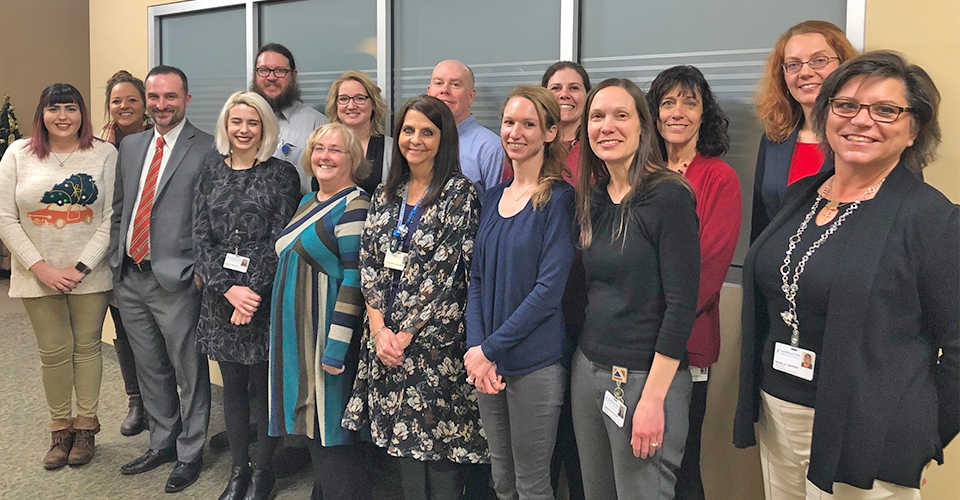As the College of Medicine prepares to implement a new curriculum for first-year students, work is happening behind the scenes to make sure that content is delivered in the smoothest possible fashion – even with the extra demands of the hybrid delivery necessitated by COVID-19.
Integral to these preparations is the curriculum operations team, consisting of curriculum managers and coordinators. The team works closely with module dyad leaders (formerly known as course directors) to ensure that their content is delivered appropriately.
To go along with the new curriculum, the University is adopting Lean Six Sigma (LSS) efficiency processes. While LSS originated in the business world, its data-driven methods can be applied to many other settings.
The curriculum operations team recently participated in a Lean event that looked at all of the processes and details involved in curriculum delivery, as a means of defining the best ways that it can support students and faculty. Facilitated by Lean Six Sigma black belt Lacey Madison, M.A., M.B.A., director of operations in the Department of Family and Community Medicine, this process empowered the curriculum team to look for areas of waste and to eliminate unneeded steps.

The training was a kaizen, a Japanese term meaning “change for good.” Unlike a top-down directive, a kaizen begins with the premise that employees are the experts in their jobs and hold the keys to doing them more efficiently, says Madison. A facilitator helps them unlock the information.
Answer the Five Whys
At the recent kaizen, the curriculum operations team began by looking at its current process and writing down every step. Along the way, one tool utilized was a process called the Five Whys to question those steps.
By the time you’ve gotten to the fifth why, you will probably have figured out what you need to fix, says Madison. As the facilitator, she helped them take fresh look at their processes so they could determine for themselves where improvements could be made.
“Sometimes we’re all just too busy to say, ‘Why are we doing it this way?’” says Madison.
Find the Waste
A key precept of Lean thinking is that one-offs and workarounds for exceptional cases are the enemy of efficiency. “The goal is to find the outlier, variation and waste – and eliminate it,” says Madison. Whether you are an individual or a team, if you can standardize processes and avoid duplicative steps, you can do your job more quickly and efficiently.
Vanessa Painter, the curriculum coordinator for Population Health, the first module in the new curriculum, said, “Being a part of the kaizen event was a great experience. We were able to lay out everything we do as coordinators to support our students and our faculty and explore ways to streamline our work. I am excited to be involved with every aspect of this process, as it really has felt like we have a voice in the way we will operate.”
Alyssa Pryor, the curriculum coordinator in the Office of Medical Education, said, “The Lean training was a very beneficial experience for the coordinators. I felt that my comments and feedback were both valued and heard.”
